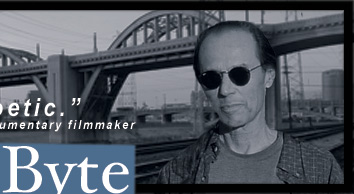
 |
9-11 and the Art of Darkness
At a press conference in Hamburg, Germany on September 16, 2001, my favorite German avant-garde composer Karlheinz Stockhausen was asked whether the characters Michael and Lucifer from a cycle of operas he wrote were for him "merely some figures out of a common cultural history" or instead "material appearances." In other words, were they fiction or were they somehow non-fiction? The composer replied, "I pray daily to Michael, but not to Lucifer. I have renounced him. But he is very much present, like in New York recently." Stockhausen was then asked how he read those events of September 11th in New York. “Well, what happened there is, of course — now all of you must adjust your brains — the biggest work of art there has ever been.” 9-11 the biggest work of art ever? Stockhausen went on to elaborate, but our sound byte world had heard all it was willing to hear. The emotional walls went up. A controversial German composer of eccentric sound clusters had offended sensibilities everywhere by suggesting, off the cuff, that the destruction of the World Trade Center and the violent death of 2753 civilians was art. Modern art, of course — but still… righteous indignation was the right proper response of the masses. As a result of his comments, a four-day long Stockhausen Festival in Hamburg was canceled and nasty anti-Stockhausen editorials circulated worldwide. Stockhausen, the oh so esoteric musical radical, had notoriously transcribed world events. Our brains, however, had not adjusted. Stockhausen apologized but said the press had published "false, defamatory reports" about his comments — that Lucifer, who he called the ''cosmic spirit'' of anarchy used his wits ''to destroy creation.'' His latest satanic composition?' 9-11. But the public would have none of Stockhausen’s explanation. There was an ax to grind. As one commentator said, “why would someone want to refer to an act of mass murder as art?” Adjust your brains. There is, and always has been, the art of darkness. It is part of the culture we live in. It is part of the world we live in. Art doesn’t have morals… and it doesn’t always live in a gallery or a concert hall. More and more, we worship images of images of images outside of images. There are no maps for these territories. Our experiences should tell us these things. A miniature freeway of Hot Wheels toy cars and trucks are considered sculpture at the Los Angeles County Music of Art. A famously signed urinal is part of the Philadelphia Museum of Art’s collection. An extinct volcanic cinder cone near Flagstaff, Arizona is one artist’s perceptual observatory. Simulacrum is the fashion and representation is all. There is, of course, good art and bad art, performance art and video art, peaceful art and violent art and art every which way. It’s all art. Why not an evil art whose canvas is the course of human events? Was Stockhausen — rest his soul — referring to the David and Goliath aspect of the fall of the twin towers. It’s an easy metaphoric fit. Against all odds, the giant goes down. And David stands triumphant. Art does not choose sides. Or was this an art of pure metaphoric unhinging? At Satan’s New York concert on September 11th, the fall of the twin towers created an anti-icon that reshaped the psyche of our culture. The image of the plane paired with the image of the skyscraper would never be the same. The metaphor once contained in the futurism of sky gods, flying machines and buildings that reach to the heavens was transformed. Once we witnessed the vision, we saw those icons through new eyes. Was it art? Contemporary artists want us to see the world differently. Stockhausen was asking that we adjust our brains, turn the knobs, forget the crime, see the cataclysmic event as an execution of what the far-reaches of art as image has become in our multi-media world. Art is not always precious or beautiful. Sometimes it is simply an image that changes us to see things in a different light. Was 9-11 horrible? Did it tear a hole in our guts? Did it make us pray for every lost soul? Yes, of course. But with one chord the world was forever changed. That doesn’t necessarily make 9-11 art… or does it? “You have people who are that focused on a performance and then 5,000 people are driven to resurrection, in a single moment,” Stockhausen said. “I couldn't do that. By comparison, we composers are nothing. Artists, too, sometimes try to go beyond the limits of what is feasible and conceivable, so that we wake up, so that we open ourselves to another world." Stockhausen continued. "It's a crime because those involved didn't consent. They didn't come to the 'concert.' That's obvious. And no one announced that they risked losing their lives. What happened in spiritual terms, the leap out of security, out of what is usually taken for granted, out of life, that sometimes happens to a small extent in art, too, otherwise art is nothing." Stockhausen wasn’t asking us to claim that mass murderers were artists. He was asking that we look at the moment and see. In spiritual terms, he was asking us to leap out of security and speak in the language that our culture of image has created. He was asking that we adjust our brains. Willing or not, the time had come. — Nathan
Callahan © NathanCallahan.com / Nathan Callahan / all rights reserved |
Broadcasting Fridays at 8:50 am from KUCI 88.9 fm Orange County, California
|